#shown: frances edison
Explore tagged Tumblr posts
Text
"Detective Tales" Clip
Morning came way too early for Edgar.
And everything was all blurry and fuzzy.
“Hey! Edgar? Eddie?” Emily waved a hand in his face. “Are you awake?”
“Sh- yes! I am! Reporting for duty, Mister President.” Edgar panicked, saluting.
“Your breakfast is getting cold. Sorry for caring, but Gertrude said I should care more often.” Emily explained as she ate a piece of toast with strawberry jam on it.
“Oh…yeah…” Edgar sighed, trying to focus. “Thanks, Emmy…I meant Emily…”
“You know I don’t mind the nickname, Edgar.”
“Ohhhhhhh, right…”
“Is Edgar okay?” Colette whispered to Cosette.
“I hope so, he seems a bit out of it.” Cosette whispered back.
Awkward silence.
“Tu l'as vu hier soir ?*” Cosette worried.
*Did you see him last night?
“Non, pas une seule fois. Il doit être fatigué ce matin… très fatigué…*” Colette replied.
*No, not once. He must be tired this morning... very tired...
“I’m fine, Whee- lette…”
“...quoi?”
*...what?
#magical robodoki#creative arts#robodoki clip#pic coming soon#not an incorrect quote#edgar constance#emily rose#mentioned: gertrude gold#colette maupassant#cosette maupassant#shown: frances edison#shown: tommy woolf#shown: gary garrison#shown: anne vernes#1:23 am#weapons drawn
2 notes
·
View notes
Text
The International Distribution of Henri Fescourt’s Les Misérables: Universal Pictures, the Carl Laemmle-Victor Hugo Scholarship, and a surprise appearance by William Hays
Sometimes it happens that two movie versions of Les Miserables are made and released at the same time. It happened first in 1909, when both the Edison Manufacturing Company and the Vitagraph Company of America released versions. It happened again in the 30s, when Raymond Bernard released a version in France, at the same time that Richard Boleslawski made his version in America. And apparently it had almost happened in the 1920s. In 1925, Henri Fescourt released his version of Les Miserables. The movie is notable for being in four parts and close to six hours long. Meanwhile in America, Universal Pictures founder Carl Laemmle was apparently thinking of doing the same thing. In 1923 he had huge success with an adaptation of Notre Dame de Paris, starring Lon Chaney. "Some months ago I had in mind making into a photoplay, Hugo's great classic, Les Miserables,” Laemmle said. “When I learned that the Societé des Cineromans were already engaged in the production of this work, I investigated and found to my great satisfaction that it was being done most admirably. Having in mind our mutual desire to share the better of European productions with our American patronage, I arranged to distribute the picture in England and America.” (the Universal Weekly, 11 December 1926) At the Regent Theatre in Portsmouth, England Fescourt's Les Miserables was recut and shown in two parts: “The Soul of Humanity” and “The Barricades.” It was reportedly very successful: 18,000 and 19,000 people were said to have seen the first and second parts, respectively. And that’s despite 80-degree weather and competition from a carnival, a regatta, and the start of the football season. People were apparently lining up 2 and a half hours before the show in order to get in. At the Rialto Theatre in London, 14,200 people came to see it in its first week. (the Universal Weekly, 2 October 1926). In the US, the movie was initially shown in three theaters: to the Associated Advertising Clubs of the World at the Forrest Theatre, in Philadelphia, to the National Press Club at the Poli's Theatre in Washington and finally at Carnegie Hall in New York City. Some sources say that the film was shown in full (18 reels), some say that it was cut (to 14 reels). The Philadelphia and Washington showings were attended by the French ambassador. (The Moving Picture World, 10 July 1926). In attendance at the Washington showing were First Lady Grace Coolidge, Herbert Hoover (then Secretary of Commerce) and MANY other people whose names you can find here.
However the showing I would most like to have attended was the one at Carnegie Hall, which was presented with a special pre-show portion: an actor portraying Victor Hugo appeared on the stage, and then pretended to fall asleep, at which point actors dressed as characters from Les Miserables emerged from a giant copy of the book. “The Hugo speech and the resurrection of his characters were part of the Universal presentation given Les Miserables by James V. Bryson and Joe Weil,” reported the Moving Picture World. “The idea was taken from the original prologue in the picture itself and made an effective opening for this really fine production.” For the film's wider release, Laemmle proposed to conduct a survey to see how people would prefer to see it: in its entirety or in an abridged form. Apparently he distributed a questionnaire via the Saturday Evening Post, Liberty, and Photoplay Magazine. Overwhelmingly people reported that they would like to see the movie unabridged, and that they would be willing to go to the theater multiple times to see the multiple installments. Wagner's Ring Cycle was cited as an example of a story successfully told in parts. People felt very strongly about wanting to see the entire thing. As one journalist, who had seen the screening in Philadelphia put it: “It would be, it seems to us, a pity to subject this picture to the sort of ruthless cutting that would be necessary to bring it down to the length of a single feature. Great length usually consists of unnecessary padding, in a large measure, but not in this instance.” (the Motion Picture News, 10 July, 1926) In the Universal Weekly (a trade publication for theater owners) one ad reads:
Thousands gave the overwhelming answer [to the question of whether it should be cut]: “DON’T touch Victor Hugo; don’t rob us of a single scene of pathos, beauty, or magnificence; give us the immortal Jean Valjean as he lived, suffered, loved, and triumphed.” So “Les Miserables” will come to you in two distinct stories, for showing on successive days, or weeks, as you see fit. First, “The Soul of Humanity;” second, “The Barricades.” Each picture so big it ranks as a screen achievement; together — Victor Hugo as Victor Hugo would want to see his work on the screen. A radical step! Yes — and it is the RADICAL that is SHOWMANSHIP!” (the Universal Weekly, 2 October 1926)
However despite this declaration that the film should and would be seen in full, Universal ultimately decided to release an 11 reel cut. As the Moving Picture World reported: “At first the two-part proposition was voted so strongly that Mr. Laemmle was on the point of ordering the print cut that way and a campaign looking toward this distribution of the picture started. But later advisors won the day. He reconsidered at the last moment. The picture has been cut to eleven reels and Carl Laemmle now announces that it will be distributed to theatres next season as a single super-special.” But Laemmle wasn’t done. He had plans for another way of exciting the public’s attention: the Carl Laemmle-Victor Hugo Scholarship. It seems that originally Laemmle had intended the contest to be for college students, as he had purportedly reached out to over 700 universities to ask if they would participate. But ultimately it was decided that the contest would be open to high school students in the United States and Canada, with prize money intended to be used in furthering their education. A similar contest was to be held in the UK, where prize money could be used for university or an apprenticeship. Students were invited to submit a 500 word essay answering the question: "What ideals for life do you find in 'Les Miserables?'" To prove that the author was in high school, the essay needed to be accompanied by a letter from their school principal. A reporter for Universal Weekly opined: “The choice of this subject is regarded as a happy one in that it gives a present day aspect to the characters and motivations of Hugo's romance. It is said to be excellent also for its scope, and not of such a nature as to hamper students from certain sections of the country or from certain walks of life.”
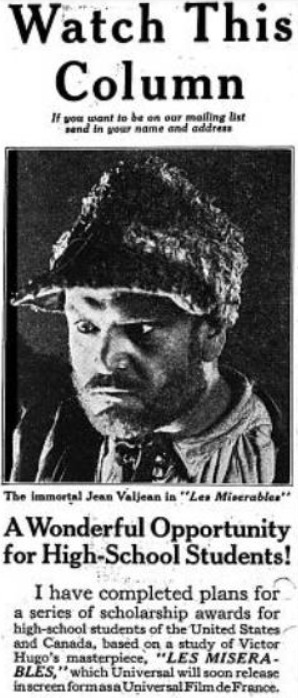
Ad in the Saturday Evening Post. For the US & Canada contest, it was announced that there would be ten $500 scholarships and one $1000 grand prize, for a total of $6,000 in scholarships (that’s over $100,000 today). The number of scholarships available was increased when Jean Sapene, of the Society of Cineromans also made a contribution of $3,000 (The New York Times, 14 Aug 1927.) According to Laemmle, the contest was not “any form of blatant advertising” (source) and yet…it was definitely an advertisement. Though technically entrants didn’t need to see the movie to submit an essay, the contest was great advertising for the movie and additionally, it elevated the profile of the movie by branding it as educational, salutary even, not simply entertaining. In “City of Dreams: The Making and Remaking of Universal Pictures,” Bernard F. Dick writes that Laemmle wanted to be known as “a defender of the values derived from a liberal arts educations” but that “those values did not exist in the abstract; they had to be present in a film Universal was releasing. [In creating the scholarship] Carl was not especially interested in Victor Hugo’s novel Les Miserables but in Henri Fescourt’s 1925 film version that Universal was releasing.” “Much thought and discussion with my associates convinced me that an admirable way to [increase the general appreciation for Victor Hugo’s creative genius] would be through a student’s essay competition,” stated Laemmle. “This would entertain on the part of the entrants something more than a casual reading of the book and impress them with the value of character as exemplified by the life of the novel’s hero" (Niagara Falls Gazette, 18 October 1927.) The scholarships would be awarded by Dr. John J. Tigert, United States Commissioner of Education; Dr. Ernst Crandall, Director of Visual Education of New York City; Dr. Thomas Finnigan, Chairman of Visual Education of the National Education Association; and Octavus Roy Cohen, an author of “ethnic comedies” (and yes that's as bad as it sounds.) The head of the awards committee was Dr. Nicholas Murray Butler, president of Columbia University (Butler would later win the Nobel peace prize but is remembered today for his notable silence in the face of the growing Nazi movement). The letter from Butler accepting the role of judge was published. Here is an excerpt:
My friend, Mr. Will Hays, has sent me your letter to him of November 9th with its kind suggestion that I should act as one of the judges in the interesting and highly useful competition that you propose for high school students. I have written Mr. Hays that it will give me great pleasure to accept your suggestion and to serve your cause to the best of my ability.
If you didn’t catch that, that’s William Hays, who the Hays code is named after.... So while I most strongly associate the 1935 American film version of Les Misérables with the movement to sanitize films and remarket them as educational, we can see that Hays and others were laying the ground work for that with this 1927 release, the scholarship contest, and an advertising campaign that sought to involve educators and students. In cities across the United States, special screenings were held for students and teachers, sometimes at a reduced price, supposedly due to the educational merits of the film (and definitely not in an attempt to sell tickets). Libraries and bookstores handed out hundreds of thousands of bookmarks (designed by the Cleveland Public Library) advertising the film, in addition to entry forms for the contest. In Charleston, South Carolina the high school superintendent wrote an article in the newspaper about the movie. (The Motion Picture News 28 January 1928). In Buffalo, New York school officials endorsed the movie and the superintendent distributed information about the scholarship. (The Motion Picture News 25 November 1927). In Boston the premiere was attended by the Governor, as well as 18 school superintendents (Motion Picture News, 18 November 1927). And in Houston, Texas students in the French and literature classes were given extra credit if they attended the movie (Moving Picture World, 31 December 1927).
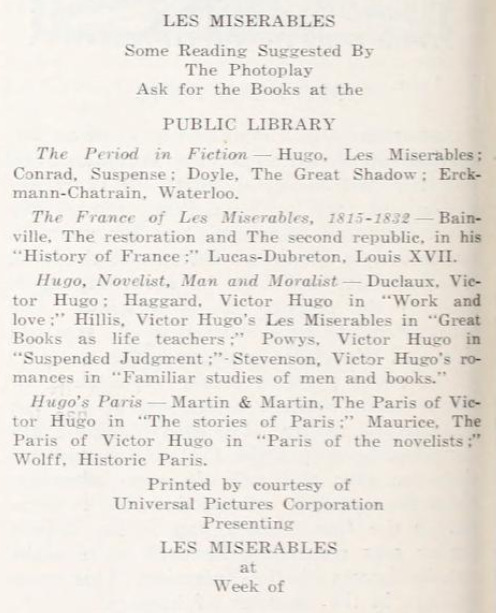
The bookmark in question (Moving Picture World, 24 December 1927.) So who won the contest? One of the $500 prizes was awarded to Alfred Hollander, a student of Emmerich Manual Training high school in Indianapolis, Indiana. He came in 5th place.
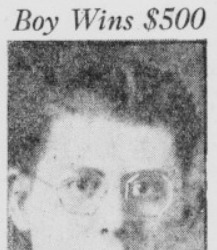
(The Indianapolis Times, 23 April 1929) And the first place winner was 14 year old Edwin M. Snell, a student at Central High School in Grand Rapids, Michigan.
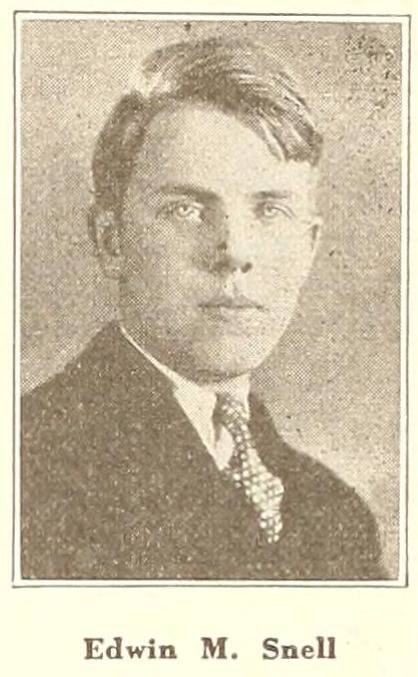
(Exhibitors Herald World, 11 May 1929) But the real winner was Universal Pictures, which surely made buckets of money. And that’s all I have to say on the subject for now, except for to thank @mabeuf5 and @l832 for reigniting my interest in this topic and that I’m sure we will be hearing more about this from the two of you soon.
#les miserables#lm 1925#lm in education#lm in america#sorry this post is so long#all mistakes are mine and mine alone
19 notes
·
View notes
Text
January 1, 2024: The Great Train Robbery (1903)
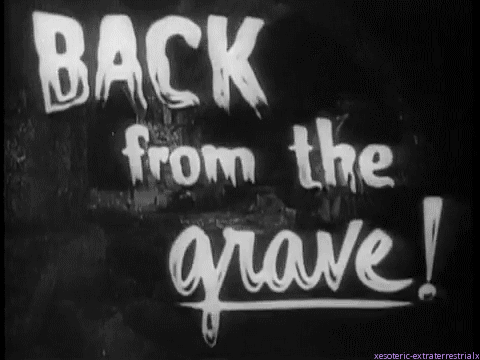
I LIIIIIIIIIIIIIIIVE
So. It's been a while. Life has been busy for the last couple of years, lemme tell you. I love this blog and I love movies, but writing can be...time-consuming for me. Anyway, I figure, why not start this whole thing over again, huh? Well, mostly. Am I gonna get to 365 movies this year? Frankly, that's unlikely, for a number of reasons. BUT! I can at least start small. And, since doing action films in January is a bit of a blast from the past...why not go all the way back this time? Plus, hey - it's a good way for me to get back into the swing of things.
Film history time!

Without going too far into it, the modern film industry began in the 1890s. The first moving pictures were mostly short documentaries, showing live as captured through multiple successive images. L'arrivée d'un train en gare de La Ciotat is often called the first film publicly shown, but that's a misconception. What is true, however, is that the film was made by two luminaries in film history: the Lumiere brothers. Their invention, the cinématographe, was essentially an early film camera, and the brothers used it to document real life.
However, for every good 19th century inventor, there's got to be a rival. And honestly, when you're talking about the 1890s, there's only one real rival to speak of for a given inventor: the Wizard of Menlo Park.
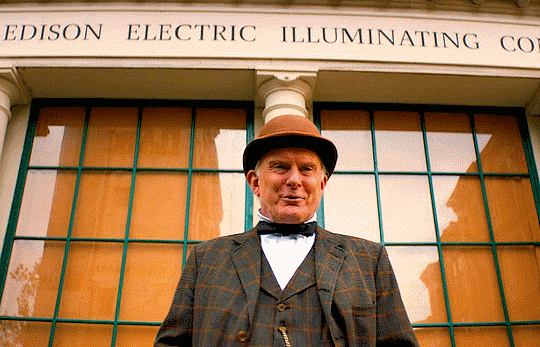
Edison, of course, is legendarily one of the biggest assholes in American history. However, to his credit, the man was genuinely brilliant. Coming up with or perfecting various contraptions and inventions, Edison was a dynamo. In 1889, he had the idea for a device that could capture and display visuals to accompany sounds from the phonograph (which he'd, of course, invented). He had a member of his think tank, William Kennedy Dickson, develop the device, and they created their own early video camera of sorts. With the combination of these two teams, amongst others here and there, the first films began distribution around 1893.
However, again, these were mostly capturing real-life footage. The first narrative films began around 1896, likely with La Fée aux Choux in that year. A minute-long film, this is arguably the first non-documentary to be produced, and would be the first of a new industry. And, fun fact, the first film to be directed by a woman, Alice Guy! After this, the Edison Manufacturing Company released the first commercially available film, The Kiss, and made buckets of cash. The film industry is born.
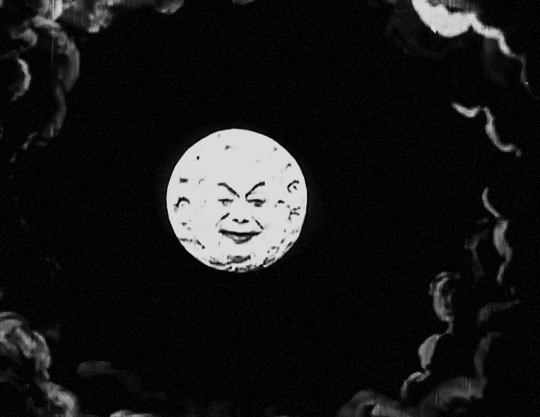
But to really hit the head on narrative film, you have to go back to France. There, illusionist Marie-Georges-Jean Méliès expanded the genre with creative sets and productions that took film into the realm of the fantastic. Inventing a number of basic tricks like dissolves and multiple exposures, Georges is the true pioneer of early film. His 1902 film, Le Voyage Dans La Lune (you know, the one where they land a ship in the Moon's eye) is considered a classic to this day, amongst other Méliès staples like Cendrillon and Le Manoir du Diable.
However, Georges isn't alone. The UK has a slew of filmakers entering the scene with their own efforts, while in the US, Edison's company is continuing their work as well. Most prominently for this story, perhaps, is the work of one of Edison's early cameramen, and therefore one of his first directors, Edwin S. Porter. Porter started with Edison in 1901, and was one of the first real film scholars. Taking from the other prominent directors of the day, he injected craft into the films he worked on for the company. At this point, one of the big things in American cinema was the brand new Western genre.

This is the point to clear up a bit of a misconception about Western films: The Great Train Robbery was in no way the first one. OK, so, the Western has its origins in Wild West shows, like Buffalo Bill's Wild West, which would travel around the world to show off the adventure and action of the American West. In fact, that GIF up above is Annie Oakley, who was filmed by Edison's Kinetoscope as an early film doing her sharpshooting act, which was a part of the show! Anyway, these exhibitions also traveled to the UK, where they made a massive impact. America was the land of the Wild West, and it arguably wouldn't shake that image until around World War II.
Because of this, the first Western films were actually filmed in England, not the United States! The first was Kidnapping by Indians in 1899, followed by A Daring Daylight Burglary in 1903. That film in particular inspired Potter, alongside an 1896 play called The Great Train Robbery, to make...well, you read the title of the review. That film is sometimes called the first Western film by mistake, but is usually forgotten in favor of Porter's film. In any case, though, the Western genre was born in the silent film era.

From that point, of course, history is made. Stars like Tom Mix, John Wayne, and Jay Silverheels make their way into the public zeitgeist. Characters like Bronco Billy, or the Lone Ranger and Tonto become household names. Classic films like Stagecoach and more bring the genre to new heights, while even comedians like Laurel and Hardy (above) get into the game with Way Out West. Even actual Western figures like Wyatt Earp became a part of the industry briefly, consulting on how things were in those wild days. It was a new dawn for film, and a unique era.
Of course, I've talked about Westerns before. Didn't get to cover much that month, but I covered a few films like Stagecoach. I even got some facts wrong in that recap about the first Western! Go figure. Anyway, that's a brief history of the Western film genre up to this point. But why cover this now? Well, this is also, for all intents and purposes, one of the first action films in cinema history. Ironically, the idea of action on screen would kick off an entirely different genre. Rather than spinning off into the Western, which became its own thing, the first iteration of the action genre was the adventure film, and guns were supplanted by another weapon.

...I really wanna talk about this film on this blog, because I adore it so much. Anyway, the swashbuckler was the next real action film genre to emerge, but that's a question for the next review, I think. In the meantime, let's get to The Great Train Robbery! This post is a little bit of a return to form for me, writing a recap and review with my 5 categories of criticism. This format might not be maintained with every film I talk about this year (however many that'll be), but I'll play it by ear depending on the film! And, so, without further ado...
SPOILERS AHEAD!!!
Recap
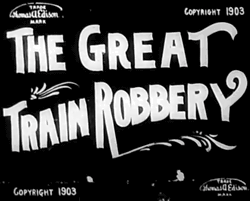
This recap is gonna be kinda weird, since as far as I can tell...there are no dialogue cards in this movie. A lot of what I'm writing here is a combination of inference and observation, as well as coordinating it with other synopses online after I'm done writing. So, yeah, this is an interesting one. Completely silent, as well.
A pair of bandits enter the room of a telegraph office, holding the clerk at gunpoint, and ordering him to write a missive of some kind before tying him up. The entire team of four bandits wait outside of the water tower used to refuel this old steam train, then sneak aboard. They immediately enter a firefight with a mail clerk on the train (who's apparently packing, damn), and kill him, then use a stick of dynamite to open a box that I assume contains valuables.
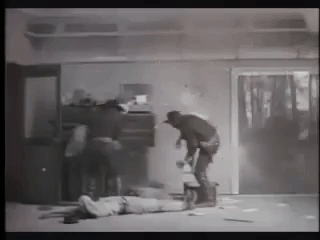
Two of the bandits climb to the top of the train, where one has a fist-fight with the fireman and...throws him off the train, damn! It's a dramatic throw, too. Anyway, once this happens, the train stops, and the bandits hold the passengers hostage aboard the train as the engine car is disconnected. The passengers are held up for their belongings, and...Jesus, guys, there are a LOT more of you than there are of the gunmen! Somebody just jump one of 'em!
Well, as if to answer my question, one of the passengers tries to run away, and gets shot in the back for his trouble. So, yeah, OK, I see the risk, but...I dunno, they only have so many bullets, I think you guys could take 'em. Anyway, the bandits escape, and the passengers immediately tend to the one who was shot. The bandits board the engine car and take off with their loot.
The party escapes into the woods a-ways down the train tracks, and meets up with their waiting horses. Meanwhile, the operator back at the station manages to get up and send out a message. His young daughter walks in and VERY smartly cuts her dad loose, making her the official hero of the film. She wakes him up, and we cut back to a dance party attended by some local lawmen. We get that Western trope where the lawmen shoot at a guy's feet to get him to dance, leading me to wonder if this is where that trope comes from?
The operator bursts in and tells the group of the trouble. They ride out to confront the bandits on horseback, but one of them gets shot in the process. Eventually, this leads to an all-out brawl in the woods, where the bandits are cut down as they count their loot. Good guys win, and the entire film ends with this classic shot of one of the bandits.
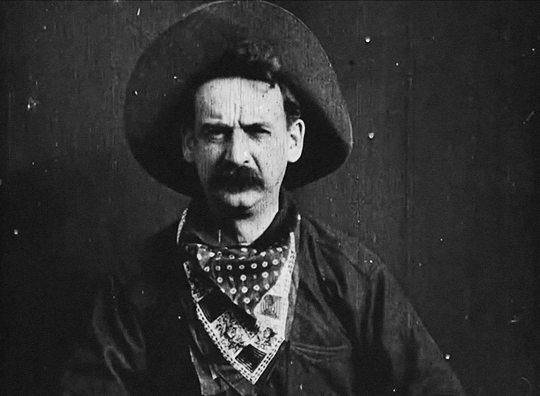
Review
So! Can I even review this one the way I would normally? I mean, probably; short films and silent films are still both films, after all, so it's not like it doesn't qualify. But there are some things obviously missing, or that need to be taken into context here. So, to go through it via bullet point method:
Cast and Acting - 7/10: Well, the actors are mostly forgotten, sorry to say; and while we know their names, none of them were actually credited in the film. The main character is arguably the bandit leader, as played by Justus Barnes, and possibly Gilbert Anderson as a few characters (including the dancer in the dance hall and the shot passenger), and Robert Milasch as the tied-up clerk (I think). Plus, it has arguably the first child actor in the form of Marie Snow, but that may need to be fact-checked. Still, they were all fine, especially for the time. Acting for no audience was sort of a new thing, after all. Hard to judge, this one.
Plot and Writing - 8/10: Hey, there is a plot, even if there's not really writing beyond a screenplay. Our writers here are director Edwin S. Porter and Scott Marble, who wrote the play this was based on. And for what it's worth, it's a simple plot. Men rob train, men get stopped. That's it. Not exactly Primer, this one.
Directing and Cinematography - 8/10: For what it's worth, I think Edwin S. Porter did a decent job in this outing. Again, this is a new doctrine entirely, so it's not like we're gonna find much creativity in either category here. Hell, according to some angles, Porter technically invented the concept of direction, but that's a very nuanced take on his role. At this point, directing just meant pointing the camera. Cinematographer (and yes, there was one) J. Blair Smith also did fine, as far as I'm concerned. Plus, hey...that last shot is iconic.
Production and Set Design - 9/10: Honestly, felt like I was watching a train robbery. So, it may feel a little Party City in terms of the bandit and lawmen costumes, but it also was authentic, so...yeah, high marks for this one.
Editing - 9/10: Normally, of course, I'd put music in this category, but...well, there's no music. So, it falls to editor...uh...oh. Shit. Wait, there's no actual editor for this one? I guess the closest I can get is Edwin S. Porter, who really carried this film. And there is editing, there has to be. After all, it managed to tell a story with literally no dialogue. No cards, no mouthed word, no music, nothin'. And yeah, I really wish that first or last one was in here at least, but the film still works without it.
So, yeah, in the end, that's an 84% for me! Which is probably causing some elderly film critic's tenderly cared-for stress-rage aneurysm to finally pop, but hey - it's how I feel. Great piece of history, completely free, and required cinephile viewing! Just go to Wikipedia or the Library of Congress.
OK, with that short-fill warm-up finally done, let's proceed through action film history! Good to be back!
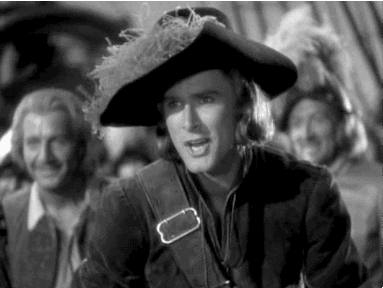
Next: Captain Blood (1935); dir. Michael Curtiz
#user365#365 days 365 movies#365 movies 365 days#365 movie challenge#action january#action#action movie#western#western film#action film#action genre#edwin s porter#edwin s. porter#the great train robbery#the great train robbery 1903#365days365movies#silent film
5 notes
·
View notes
Text
Wireless Dental Sensor Market Growing Popularity and Emerging Trends in the Industry
Wireless Dental Sensor intraoral x-ray sensors are small x-ray imaging sensors that are designed to fit comfortably into a patient's mouth and provide images that have been shown to be just as diagnostic as film radiographs. However, digital sensors provide clinicians with far more flexibility in how radiographic images can be used. Digital dental x-ray systems are friendlier to the patient and the doctor, with better resolution, dramatically reduced radiation to the patient, and software that allows clinicians to zoom into parts of the image and apply filters for enhanced diagnostics.
Free Sample Report + All Related Graphs & Charts @: https://www.advancemarketanalytics.com/sample-report/196845-global-wireless-dental-sensor-market?utm_source=Organic&utm_medium=Vinay
Latest released the research study on Global Wireless Dental Sensor Market, offers a detailed overview of the factors influencing the global business scope. Wireless Dental Sensor Market research report shows the latest market insights, current situation analysis with upcoming trends and breakdown of the products and services. The report provides key statistics on the market status, size, share, growth factors of the Wireless Dental Sensor The study covers emerging player’s data, including: competitive landscape, sales, revenue and global market share of top manufacturers are Dentsply Sirona (United States), Envista (United States), Vatech (India), Planmeca (Finland), Carestream (United States), Midmark (United States), Acteon (France), Owandy (France), MyRay (Germany), DentiMax (Unites States)
Thanks for reading this article; you can also get individual chapter wise section or region wise report version like North America, Europe or Southeast Asia.
Contact Us:
Craig Francis (PR & Marketing Manager)
AMA Research & Media LLP
Unit No. 429, Parsonage Road Edison, NJ
New Jersey USA – 08837
0 notes
Text
Aerospace Composite Materials - Market is set for a Potential Growth Worldwide: Excellent Technology Trends with Business Analysis
Aerospace Composite Materials are any material system consisting of two or more discrete materials that collectively provide properties that could not be exhibited by any of the constituent materials in isolation. Aerospace Composite Materials are made of a fibrous reinforcement such as carbon or glass fiber, which provide strength and stiffness, embedded in a matrix material to provide the overall shape, support, and toughness of the material. Aerospace Composite Materials are becoming increasingly important in the aerospace industry. Although several applications in the aerospace sector have shown significant growth in the forecast period. The nature of Aerospace Composite Materials and special problems in designing and working with them is then highlighted. Aerospace Composite Materials are utilized extensively across aircraft, with use becoming ever more widespread as materials and processes become more affordable and are better able to meet product requirements. The global aerospace composites market was valued at USD 11.5bn in 2015 and is expected to grow to USD 24.8bn by 2025 with a CAGR of 9.1%. The demand for the market is propelling to an extreme level in the forecast period.
Free Sample Report + All Related Graphs & Charts @: https://www.advancemarketanalytics.com/sample-report/192771-global-aerospace-composite-materials---market?utm_source=Organic&utm_medium=Vinay
Latest released the research study on Global Aerospace Composite Materials - Market, offers a detailed overview of the factors influencing the global business scope. Aerospace Composite Materials - Market research report shows the latest market insights, current situation analysis with upcoming trends and breakdown of the products and services. The report provides key statistics on the market status, size, share, growth factors of the Aerospace Composite Materials - The study covers emerging player’s data, including: competitive landscape, sales, revenue and global market share of top manufacturers are Airbus (France), 3DFortify (United States), Arris Composites (United States), Rolls-Royce (United Kingdom), 9T Labs (Switzerland), Collins Aerospace (United States), Markforged (United States), Hexcel Corporation (United States), SMI Composites, LLC (United States), Kineco Limited (India), satsearch B.V (Netherlands), Hexagon AB (Sweden), Solvay (Belgium), PARK AEROSPACE CORP (United States), Others, ,
Thanks for reading this article; you can also get individual chapter wise section or region wise report version like North America, Europe or Southeast Asia.
Contact Us:
Craig Francis (PR & Marketing Manager)
AMA Research & Media LLP
Unit No. 429, Parsonage Road Edison, NJ
New Jersey USA – 08837
0 notes
Text
What Came Before – Pre-Cinema Technologies and How 4K Scans Reinvigorate Classic Footage
By Jack Muscatello
Prior to the invention of the film “industry”, and even preceding the first profitable cinema complex, came the very early and very experimental work of the Lumiere brothers, Thomas Edison and Georges Melies. Including a bizarre execution of an elephant and the first kiss put to film, the work of these men, in its most infant form, serves as the starting point for the new art form that quickly became the cinema. This very “start” emerged in the form of the kinetoscope, which was pioneered and formatted by Thomas Edison and his staff, and subsequently adopted in a similar manner by the Lumiere brothers in France. The two parties quickly began documenting several brief segments, including ordinary daily functions and the aforementioned bizarre experiments, suddenly creating a culture of spontaneous documentation surrounding the kinetoscope and the earliest playback of still images at near 24 frames per second.
One of the most interesting connections between the earliest motion pictures and the hyper-modern status of the film industry today is the surprising quality of some of the earliest recordings in cinema history. As an example, The Arrival of a Train at La Ciotat Station by the Lumiere Brothers was recorded to the earliest film stock, highly experimental and incredibly unpredictable. As a result of the brilliance of their technological breakthrough, their original prints of film stock were saved, and scanned by 4K devices over 100 years later. These scans, which are able to process a significantly greater range of detail within the stock, has provided the surprisingly smooth, crisp and clear images shown in the 4K restoration of this short segment in film history. It’s surprising because the original scans, processed even before the official normalization of cinema as an art form, were incredibly grainy and unrefined. But, due to the innovative actions of generations, all of the previously hidden detail in these films has been brought to the surface.
One of the leading creatives behind new 4K restorations is Peter Jackson, who developed arguably the most faithful film adaptation of classic literature with his Lord of the Rings trilogy. Jackson has involved himself with several 4K scan and coloring projects for old film stocks. One of his most prominent works in this field, 2018’s They Shall Not Grow Old combined his work in rescanning and coloring and applied it to original footage capture in trenches and battlefields during World War I. The footage looks surprisingly crisp and high quality, which, when combined with the new color added in digitally, helps create a uniquely modern vantage point into life as a soldier over 100 years ago. The footage that was originally captured was intended for nothing more than the most basic of projectors and kinetoscopes. However, in 2018, that same footage was restored to play at the same resolution as the top blockbusters, and in the largest theaters available.

0 notes
Text
EVOLUTION OF CINEMATOGRAPH ( 19 CENTURY )
1832
The Belgian physicist Joseph Plateau and the Austrian professor of practical geometry Simon Stampfer invented the Phenakistiscope, the first practical device to create a fluid illusion of motion.
1878
Using a battery of 12 cameras Eadweard Muybridge records several series of The Horse in Motion, capturing successive phases of movements that allowed his patron Leland Stanford to study the positions of the legs of his race horses during different gaits
1882
Étienne-Jules Marey developed the Chronophotographe, which could take 12 pictures per second from a single viewpoint.
1888
In Leeds, England Louis Le Prince films Roundhay Garden Scene, believed to be the first motion picture recorded. Sarah Whitley, Joseph Whitley and Annie Hartley in the garden of Oakwood Grange, leisurely walking around the garden of the premises. Sarah is seen walking – or dancing – backward as she turns around, and Joseph's coattails are seen flying as he also is turning.
1889 or 1890
By William Kennedy Dickson and William Heise. Monkeyshines is a series of experimental short silent films made to test the original cylinder format of the Kinetoscope, and are believed to be the first films shot in the United States.
1891
Dickson Greeting, by William Kennedy Dickson was the first semi-public demonstration of cinematographic pictures in the United States. The National Federation of Women's Clubs were shown a 3 second clip of Dickson passing a hat in front of himself, and reaching for it with his other hand on May 20, 1891 at Edison's laboratory.
1892
On 28 October 1892 Charles-Émile Reynaud gave the first public performance of a moving picture show at the Musée Grévin in Paris, the Théâtre Optique. The show, billed as Pantomimes Lumineuses, included three cartoons, Pauvre Pierrot, Un bon bock, and Le Clown et ses chiens, each consisting of 500 to 600 individually painted images and lasting about 15 minutes.
1893
Blacksmith Scene, by William Kennedy Dickson. The first Kinetoscope film shown in public exhibition on May 9, 1893 and is the earliest known example of actors performing a role in a film.
1894
On April 14, 1894, a public Kinetoscope parlor was opened by the Holland Bros. in New York City at 1155 Broadway—the first commercial motion picture house. For 25 cents a viewer could see all the films in either row.
The Dolorita Passion Dance was banned in New Jersey after its use in peepshows (pornographic). Russell Kick quotes the work Censorship as saying it "was probably the first [film] to be banned in the United States."
La Sortie des Usines, the first film to be made in France.
The Dickson Experimental Sound Film by William Kennedy Dickson. It is the first known film with live-recorded sound and appears to be the first motion picture made for the Kinetophone, the proto-sound-film system developed by Dickson and Thomas Edison.
1895
First hand-colored film, Annabelle Serpentine Dance by William Kennedy Dickson.
Charles Francis Jenkins displays the Phantascope, the first patented Film projector.
Incident at Clovelly Cottage by Robert W. Paul and Birt Acres is the first film to be made in the United Kingdom.
L'Arroseur Arrosé, the first comedy film.
The Execution of Mary Stuart, the first use of a special effect in a movie.
History of the Kinetograph, Kinetoscope, and Kinetophonograph by Antonia and William Kennedy Dickson, considered the first book of history on film, is published.
1896
The first building dedicated exclusively to showing motion pictures was the Vitascope Hall, established on Canal Street, New Orleans, Louisiana, on June 26 — it was converted from a vacant store.
Later that year on October 19, the Edisonia Hall opened in Buffalo, New York in the Ellicott Square Building. The Edisonia was the first known dedicated, purpose-built motion picture theater in the world.
Alice Guy-Blaché, the first female film director makes La Fée aux Choux (The Cabbage Fairy) acknowledged as the first narrative fiction film. This movie also introduces screenplays for the first time.
In The Kiss, May Irwin and John Rice re-enact the kiss from the New York stage hit The Widow Jones, the first film of a couple kissing.[15]
The House of the Devil, the first horror film.
Le Coucher de la Mariée, a French erotic short film considered to be one of the first erotic films made. The film was first screened in Paris in November 1896, within a year of the first public screening of a projected motion picture.
1898
Walking Troubles of Organic Hemiplegy was the first documentary film in the world, created by Romanian neurologist Gheorghe Marinescu. The film depicts several patients affected by debilitating neurological diseases walking before and after treatment.
1899
The first example of object manipulation and stop-motion animation was the short film by Albert E. Smith and J. Stuart Blackton called The Humpty Dumpty Circus.
King John is the first film adaptation of the work of William Shakespeare. The film features Herbert Beerbohm Tree in the title role and features the death scene from King John.
1 note
·
View note
Text
“Being a bad biocitizen.”
-------
Marlene Feenstra (née McCorrister), my grandmother, was a Cree woman from Peguis First Nation. Peguis, our nation, is nestled among the ancestral lands and shared territories of the Cree, Anishinabeg, Assiniboine, and Métis peoples -- our homelands that sprawl out from the forks of the Red and Assiniboine Rivers in what is now Winnipeg, Manitoba, Canada. [...] Gram [was] born in 1936 [...]. She attended residential school [...], and then, as an adult, she was legally denied residence on her reserve due to her marriage to a non-Indian [...]. Yet, despite these and other experiences, and like many Indigenous people, my grandmother never thought of herself as being colonized. [...]
Three years ago, when my grandma passed away, I spent a few days going through the old photographs, newspaper clippings, calendars, and notes she had archived for over sixty years. [...] I was glad, on that cold Winnipeg afternoon, to appreciate her taste in interesting imagery. Their combined content lays out a scene ripe for analysis: One card depicts what it called the “Discovery of Canada”: Jacques Cartier presenting the “weird apparition” of an Indian Chief to the king and queen of France in 1536. A postcard named the “Canadian Rockies” displays a scene of Alexander Mackenzie, Simon Fraser, and La Verendrye: on the back, the card describes them as “great explorers who played stupendous and courageous roles in western development.” Another postcard features the nineteenth-century Métis leader Louis Riel, sitting inside a prison cell awaiting his federally sanctioned execution. Finally, at first glance out of place in this set, is a postcard with the name “Science and Invention” and an image of a basement laboratory peopled by Albert Einstein, Thomas Edison, Alexander Graham Bell, and Frederick Banting.
-------
It is difficult to say whether Gram chose these cards for how, taken together, they illustrate the curious relationships between colonial expansion, the confinement of Indigenous peoples, and scientific inquiry. If she did conceive of the reciprocal relationships connecting the logics of exploration, discovery, and innovation with histories of colonialism, then she was in good company.
Historians of colonial science, for example, have shown that there is a historical relationship between the development of what is now considered modern science, the technoscientific advances indelibly marking Western civilization, and European imperialisms and colonialisms. Further, Indigenous studies scholars have located modern science within an ongoing colonial system that, working in tandem (and, at times, in tension) with other institutionalized fields, overwrites Indigenous peoples’ knowledges of their existence as peoples in terms of the logics of citizenship, rights, sovereignty, and capital. [...]
-------
Advances in genomic knowledge are both intriguing and frightening given that the “gift” and “weight” of science and technology fields have always been simultaneously present for Indigenous peoples.
When I was invited to speak at “The Gift and Weight of Genomic Knowledge: In Search of the Good Biocitizen,” out of which this special report evolved, I was enthused by the rich conference rationale provided by organizers Joel Reynolds and Erik Parens. Consistent with Foucauldian scholarship such as that of Nikolas Rose, Carlos Novas, and Dorothy Roberts, the conference framed biocitizenship in relation to that shift provoked by increasing amounts of biological, and especially genomic, knowledge and data that are changing the ways that citizenship is being imagined. Civic responsibility in the age of biocitizenship, Reynolds and Parens observed, encompasses being and remaining healthy for the sake of ourselves and for the greater good of human populations: biometrically monitoring one's physical activity, seeking out direct-to-consumer genetic tests, coughing into the inside of one's elbow, employing barrier methods during sexual intercourse, and on and on are all examples of good bio-practice. In this spirit, biocitizenship -- the emphasis on the human population as biological -- has been endowed with the capacity to reconcile historic wrongs. The conference and this special report, as I understand them, are challenging us all to take pause amidst the accelerating pace of biomedical and genomic data generation and to critically reflect on the seemingly simple yet hugely difficult questions, what is a “good” biocitizen, and how do we become one?
I propose that one analytical pathway leading to said aspirational goodness might be found in its reverse: that is, in badness.
Following bell hooks's description of politicized looking relations, I am establishing these provocations to reorient, from my explicit vantage point, the set of concepts and real-world problems that this special report explores. As examined by hooks, in resistance struggle, the power of the dominated to assert agency by claiming and cultivating “awareness” politicizes looking relations -- one learns to look a certain way in order to resist. Reframing the terms of the discussion is a critical practice in also restructuring the power dynamics that shape common-sense ideas about what it means to be good. The exogenous generation of genomic knowledge about indigeneity, for example, exerts a scientific claim that one can see indigeneity in a way that actually matters. Seeing indigeneity through the prism of genomic knowledge is shaped by colonial lenses insofar as it is based on an understanding of indigeneity as primarily real, genetically. Academic and other ways of thinking that try to make sense of and represent genomic realities of the present are also structured by colonial looking relations. [...]
-------
Over twenty years ago, among the formative scholarship of early Indigenous studies, Vine Deloria Jr. published Red Earth, White Lies: Native Americans and the Myth of Scientific Fact (1995). Through this book and his other works, Deloria locates modern science within a colonial matrix that seeks to secure itself as a panacea of truthful knowledge creation at the expense of Indigenous sovereignties. [...] Fields, including scientific fields, that attempt to externally translate Indigenous peoples’ self-conceptions into a categorical or taxonomical language are interfering with their sovereign way of being.
Since the publication of Red Earth, White Lies, others have considered what the complicated entanglements of Indigenous knowledges are as they exist in relationship to science and technology fields. In Braiding Sweetgrass: Indigenous Wisdom, Scientific Knowledge, and the Teachings of Plants (2013), Robin Wall Kimmerer, for instance, provides a textually melodic illustration of the complementarities between botany, Potawatomi ecology, and the human and nonhuman relations that sustain her everyday experience. Noenoe Silva's Aloha Betrayed: Native Hawaiian Resistance to American Colonialism (2004) similarly considers how Kanaka Maoli have leveraged modern technological advancements in press and printing to oppose the illegal annexation of their territories. These works and others like them have unlocked methodological potential that is not premised on orthodox cultural expectations by framing the use and formation of twentieth- and twenty-first-century sciences and technologies as being instead Indigenous. These novel works set a stage for elaborate consideration of how engagement with technosciences on Indigenous peoples’ own terms might support their local governance systems: their ways of relating in and with localities of misewa (all that exists). [...]
-------
Fundamental to colonial civilizing missions were the so-called gifts of science and technology that Western imperial powers gave to their colonies and subjects.
Through the rhetorical prism of gifting, scientific claims to the “greater good” have been an enduring logic justifying scientific pursuits, while the collateral damage characteristic of incremental and experimental scientific methods have been disproportionately felt by Indigenous peoples as well as all other bodies deemed unreasoned (including human and nonhuman). [...]
Although there are now many versions of justice in concept and practice, many if not all of them are shaped through the presumed possibility that a normative good exists and that the journey of becoming good is, in itself, good. [...]
I charge non-Indigenous and Indigenous peoples alike to be bad: unpack and undermine the investments they have in propertied [...] state-based sovereignty and nationalism, capitalist cultures of consumption, and settler fantasies of being rightful and good.
-------
Jessica Kolopenuk. “Provoking Bad Biocitizenship.” Hastings Center Report Vol. 50 Issue S1. June 2020.
145 notes
·
View notes
Text
French Perspective on American Film - Social Qualities

Social trades fill an assortment of needs. They can be utilized to connect political partitions, increment the comprehension of another country, or give a fare market to items and administrations. At the point when one culture's mastery of a specific medium exists, their might be doubt and hatred when it is traded to different pieces of the world.
In the US, the creation of movies is viewed as an industry. In this view, Los Angeles is a processing plant town that produces films, network shows, and melodic accounts similarly that Gary, Indiana produces steel and refines oil. In different pieces of the world, be that as it may, the creation of movies is viewed as a work of art similar as composing a novel or verse. No place is this social gap more obvious than the thought of film in the US and France.
The French perspective on American film is very much communicated by film maker Marin Karmitz. Karmitz has expressed that, "the U.S. film industry is enormous business, however behind the modern angle, there is likewise a philosophical one. Sound and pictures have consistently been utilized for promulgation, and the genuine fight right now is over who will be permitted to control the world's pictures, thus sell a specific way of life, a specific culture, certain items, and certain thoughts" (Francesco 441). Is French culture undermined by the importation of American movies and amusement? A nearer assessment of the two contending societies, and the job of the film in each, is significant in discovering the appropriate response.
American and French Film
The Part of the Film in France
The Clash of France and the subsequent German triumph in 1940 prompted a period of extreme interior assessment of French culture as a methods for discovering an answer, and fixing fault, for the loss. No place is this preferred represented over on account of the 1937 film "Le Grande Deception" (which was restricted by the French Government in 1939). Jean Renior's film was perhaps the most mainstream French movies of the interwar years and was the climax of a progression of against war films that started with Gance's "J' Blame" in 1919. The "Excellent Dream" is that war addresses anything (Jackson 148). After the loss, this film, alongside books by Proust and Cocteau, were reprimanded for making a conservative culture in France that prompted the loss. Marin Karmitz's remarks about the force of film cited above, in this manner, are all around grounded in French history and culture.
The Movie Business in America
Rather than unfamiliar producers, the American entertainment world perspectives its items as a ware. The item is to make a film, showcase and appropriate it, and procure the benefits (Francesco 442). While "Slaughterhouse Five" and "One Flew over the Cuckoos' Home" are instances of American producers creating insightful, philosophical pictures, these are special cases instead of the standard. Most American movies are created only for amusement esteem and, simultaneously, do well monetarily both in the U.S. what's more, abroad.
Differentiating French and American Culture
As expressed in the content, "authoritative and public societies impact hierarchical conduct" (Francesco 13). A comprehension of the varying perspectives on media outlets between the US and France must be shown up at by an assessment of their societies.
Hofstede's Elements of Social Qualities
Hofstede's Components of Social Qualities gives a helpful device in analyzing the varying societies in France and US. In view of his investigation of more than 100,000 IBM workers across the world, Hofstede verified that there are measurements to clarify contrasting societies: independence/community, power distance, vulnerability evasion, and manly female.
Independence/Cooperation
In independent social orders, individuals are more worried about themselves and their families than with others. Mirroring this, associations endeavor to respect the individual and base advancement and remuneration on singular exertion. This remains constant in any event, when people are essential for a group.
In collectivist nations, the general great of the gathering is foremost. This holds particularly obvious in the previous Soviet Association and its satellites in spite of their transformation to unrestricted economy economies. The assumption in these social orders is that people will subordinate their objectives to benefit the gathering.
Under Hofstede's examination, both the US and France are maverick social orders. In the two nations, singular drive is significant and remunerated. Applying this examination to the entertainment world, it is not difficult to see that films in the two nations are basically recognized by their lead entertainers and makers.
Force Distance
Force distance is characterized as the level to which less amazing individuals from an association acknowledge that force is unevenly conveyed.
A little force distance society is awkward with power distances. These distances might be founded on monetary riches, training, or hierarchical positioning. It is viewed as certain conduct for somebody in a significant level situation to treat somebody at a lower level as an equivalent. Associations in little force distance social orders will in general have more interest at all levels in the dynamic cycle.
In an enormous force distance society, a person's cultural or hierarchical level impacts their conduct and the conduct of others toward them. While people in a higher authoritative or cultural position approach others with deference, the distinctions in position are clear and never completely neglected. In huge force social orders, choices are made by pioneers with almost no contribution from those beneath them on the progressive stepping stool. Appointment of dynamic is infrequently done.
While the U.S. is a little force distance society in Hofstede's investigation, France conversely is a huge force distance society. This reality was ridiculed in a 1941 political animation. In the animation "two dazed French workers are being told by an educated person: 'How might you be astounded [about the defeat]? You glutted yourselves on crafted by Proust, Gide, and Cocteau.' Every one of these journalists partook in like manner the way that they are gay" (Jackson 4). In addition to the fact that this cartoons depict the goals of the elites, it likewise brings up again the significance of human expressions in influencing French general assessment.
American associations in principle, if not generally practically speaking, esteem the contribution of people paying little heed to their cultural or hierarchical position. Quite a while prior, Sperry Rand Enterprise ran a promoting effort dependent on tuning in. In its commercials, it depicted a leader toward the day's end examining the organization with a more seasoned individual from the support office. The message Sperry Rand attempted to pass on was that its leaders were available to thoughts paying little heed to their source.
Vulnerability Evasion
Vulnerability evasion characterizes the favored measure of design in a general public. This design may include common laws or exacting behavior of conduct at the one limit, and the acknowledgment of a wide scope of practices at the other.
In a solid vulnerability evasion society, individuals lean toward structure and unequivocal standards of conduct. As is valid in numerous enormous force distance social orders, there is a solid regard for specialists. The danger evasion conduct found in these societies can prompt a lack of new plug adventures and a craving among chiefs to stay utilized by a similar association for an extensive stretch of time.
Conversely, feeble vulnerability evasion social orders favor unstructured circumstances, overwhelming inclinations of individual certainty, and enterprising conduct.
French society is set apart by solid vulnerability evasion. This might be clarified partially by the excruciating encounters of two universal conflicts in the twentieth century and may clarify its disposition toward human expressions. In a general public where specialists and savvy people are regarded due to their social status, high worth is put on human expressions and the security of local culture.
American culture interestingly is set apart by powerless vulnerability evasion. The pioneering idea of the American film industry is highlighted by two realities. The first is that the early film pioneers in California didn't move toward the West Coast for its bounty of daylight, however to be liberated from Thomas Edison's legal advisors who were requesting eminences for the utilization of Edison's innovation. Furthermore, a considerable lot of California's initial studios were established by Jewish finance managers from the East Coast, who as a result of bias, were obstructed from seeking after customary vocations in banking and enormous business.
Manly/Female
In manly social orders, achievement, confidence, and contest are compensated. In ladylike societies, individual connections, care for other people, and personal satisfaction are profoundly esteemed. Hofstede characterizes American culture as manly and French society as feminine.There are a few different ways to see the movie and media outlets in this light. From one perspective, American movies will in general be activity situated with a self-assured and fruitful legend or courageous woman. Simultaneously, American studios were established by daring people who were remunerated monetarily for their endeavors. find more information international movies streaming
French movies interestingly will in general be insightful and less activity situated. As "Le Grande Hallucination" shows, French movies are frequently clearly political in nature.
End
French and American movies are extraordinary. In like manner, the disposition of French and American producers toward their industry's part in the public arena is unique. Hofstede's Elements of Social Qualities furnishes a structure with which to investigate these distinctions. French society can be described as individualistic, enormous force distance, solid vulnerability avoidant, and female. Conversely, American culture is described as individualistic, little force distance, frail vulnerability avoidant, and manly.
At the point when see through the viewpoint of culture, it isn't hard to comprehend
#Nigerian movies#Lewabo movies#Christian movie website#watch Christian movies online#international movies online
1 note
·
View note
Text
Aircraft De-Icing System Market Outlook 2021: Big Things are Happening
A new business intelligence report released by AMA Research with title “Global Aircraft De-Icing System Market Insights, Forecast to 2026” provides latest updates and strategic steps taken by competition along with growth estimates of market size. The Global Aircraft De-Icing System Market report gives clear visions how the research and estimates are derived through primary and secondary sources considering expert opinion, patent analysis, latest market development activity and other influencing factors. Some of the key players profiled in the study are B/E Aerospace, Inc. (United States), LyondellBasell Industries N.V. (Netherlands), UTC Aerospace Systems (United States), JBT Corporation (United States), Clariant AG (Switzerland), The Dow Chemical Company (United States), Cryotech Deicing Technology (United States), Kiittokori OY (Finland), Kilfrost Ltd. (United Kingdom) and BASF SE (Germany), Free Sample Report + All Related Graphs & Charts @ : https://www.advancemarketanalytics.com/sample-report/108000-global-aircraft-de-icing-system-market
Over the past few, the atmospheric temperature has shown significant volatility, which has upsurged the complexities as well as maintenance and prevention of aerospace icing and Deicing. The aircraft deicing systems are majorly used nowadays since deicing of the aircraft can cause a crash. Frozen contaminants from the atmosphere can cause critical control surfaces to be rough and uneven. This might disrupt the stabilized airflow by significantly minimizing the ability of the wing to generate lift which ultimately increases drag minimizing the machine efficiency. Thus the use of deicing systems especially in European countries is one of the vital need across the global aerospace industry. Market Overview of Global Aircraft De-Icing System If you are involved in the Global Aircraft De-Icing System industry or aim to be, then this study will provide you inclusive point of view. It’s vital you keep your market knowledge up to date segmented by major players. If you have a different set of players/manufacturers according to geography or needs regional or country segmented reports we can provide customization according to your requirement. This study mainly helps understand which market segments or Region or Country they should focus in coming years to channelize their efforts, understanding current investments cycle and impact of COVID-19 and slowdown. The report presents the market competitive landscape and in depth analysis of the major vendor/key players in the market along with their strategies to overcome production cycle issue and supply chain management to make process efficient. For Early Buyers | Get Up to 10–25% Discount on Premium Version of this Report: https://www.advancemarketanalytics.com/request-discount/108000-global-aircraft-de-icing-system-market The Global Aircraft De-Icing System Market segments and Market Data Break Down are illuminated below: by Type (Deicing Truck, Deicing Fluid), Application (Commercial-Narrow Body, Wide Body, Very Large Aircraft, Military) Players and Region — Global Market Outlook to 2025
Furthermore, the years considered for the study are as follows: Historical year — 2015–2020 Base year — 2020 Forecast period** — 2021 to 2026 [** unless otherwise stated] **Moreover, it will also include the opportunities available in micro markets for stakeholders to invest, detailed analysis of competitive landscape and product services of key players. Region Included are: North America, Europe, Asia Pacific, Oceania, South America, Middle East & Africa Country Level Break-Up: United States, Canada, Mexico, Brazil, Argentina, Colombia, Chile, South Africa, Nigeria, Tunisia, Morocco, Germany, United Kingdom (UK), the Netherlands, Spain, Italy, Belgium, Austria, Turkey, Russia, France, Poland, Israel, United Arab Emirates, Qatar, Saudi Arabia, China, Japan, Taiwan, South Korea, Singapore, India, Australia and New Zealand etc. Get More Information & Customization: https://www.advancemarketanalytics.com/enquiry-before-buy/108000-global-aircraft-de-icing-system-market Important Features that are under offering & key highlights of the report:
- Market Data Segmentation with production, consumption, revenue (million USD), and Price Analysis
- Detailed overview of Aircraft De-Icing System market
- Changing market dynamics of the industry and Impact of Influencing Factors
- In-depth market segmentation by Type, Application and other major segments etc.
- To analyse and forecast the Global Aircraft De-Icing System market, in terms of value and volume.
- Which segment has the potential to gain the highest market share?
- To help decision maker from new offer perspective and benchmark existing marketing strategy.
- Correlate cost structure historical data with key business segments.
- Analyse marketing contribution and customer acquisition by up-selling and cross selling.
- Identifying Influencing factors keeping Global Aircraft De-Icing System Market Intense, factored with periodic analysis of CR4 & CR8 concentration ratio & HHI Index.
Major Highlights of TOC:
Chapter One: Market Overview
1.1. Introduction
1.2. Scope/Objective of the Study Chapter Two: Executive Summary
2.1. Introduction Chapter Three: Market Dynamics
3.1. Introduction
3.2. Market Drivers, Trends, Challenges, Opportunities Chapter Four: Market Factor Analysis
4.1. Porters Five Forces
4.2. Supply/Value Chain
4.3. PESTEL analysis
4.4. Market Entropy
4.5. Impact Analysis — Post COVID-19
…………
Chapter Nine: Methodology and Data Source
Key questions answered
· Influential trends or factors that is booming demand and restraints in the market.
· What is the market concentration? Is it fragmented or highly concentrated?
· Global Aircraft De-Icing System Market Trends (Drivers, Constraints, Opportunities, Threats, Investment Opportunities, and Strategic Recommendations)
· Market share analysis of the top industry players ….
Read Detailed Index of full Research Study at @ https://www.advancemarketanalytics.com/reports/108000-global-aircraft-de-icing-system-market Customization Service of the Report:- AMA Research provides customization of reports as per your need. This report can be personalized to meet your requirements. Get in touch with our sales team, who will guarantee you to get a report that suits your necessities. Thanks for reading this article; you can also get individual chapter wise section or region wise report version like North America, West Europe or Southeast Asia. About Author:
Advance Market Analytics is Global leaders of Market Research Industry provides the quantified B2B research to Fortune 500 companies on high growth emerging opportunities which will impact more than 80% of worldwide companies’ revenues.
Our Analyst is tracking high growth study with detailed statistical and in-depth analysis of market trends & dynamics that provide a complete overview of the industry. We follow an extensive research methodology coupled with critical insights related industry factors and market forces to generate the best value for our clients. We Provides reliable primary and secondary data sources, our analysts and consultants derive informative and usable data suited for our clients business needs. The research study enable clients to meet varied market objectives a from global footprint expansion to supply chain optimization and from competitor profiling to M&As. Contact Us:
Craig Francis (PR & Marketing Manager) AMA Research & Media LLP Unit №429, Parsonage Road Edison, NJ New Jersey USA — 08837 Phone: +1 (206) 317 1218 [email protected] Connect with us at LinkedIn | Facebook | Twitter
1 note
·
View note
Text
"How Do You Camp When Your Aura Is Not Camp?" Clip
“And that is how you tie a knot.” Edgar told some ghost scouts Aile was with.
The small group gave small ‘oooooooooooohs’.
“So, carbon monoxide during a sleepaway camp in Ohio?” he checked Aile’s papers.
Aile nodded. “All over the news.”
“Only in Ohio.” Theodore muttered as he tried to carry a bunch of logs.
“Wow, that’s a lawsuit waiting to happen. I wonder if they got a leg to stand on-” Edgar began.
Wheeler tilted his head.
“-It’s a law expression.”
#magical robodoki#creative arts#weapons drawn#not an incorrect quote#pic coming soon#robodoki clip#edgar constance#aile ambroise#theodore gumshoe#charlie “wheeler” thackery#shown: gertrude gold#shown: emily rose#shown: arthur king#shown: henry adams#shown: agatha leblanc#shown: frances edison#camping#tw: child death#11:33 pm
1 note
·
View note
Text
Events 9.30
489 – The Ostrogoths under Theoderic the Great defeat the forces of Odoacer for the second time. 737 – The Turgesh drive back an Umayyad invasion of Khuttal, follow them south of the Oxus, and capture their baggage train. 1139 – A magnitude 7.7 earthquake strikes the Caucasus mountains in the Seljuk Empire, causing mass destruction and killing up to 300,000 people. 1399 – Henry IV is proclaimed king of England. 1520 – Suleiman the Magnificent is proclaimed sultan of the Ottoman Empire. 1541 – Spanish conquistador Hernando de Soto and his forces enter Tula territory in present-day western Arkansas, encountering fierce resistance. 1551 – A coup by the military establishment of Japan's Ōuchi clan forces their lord to commit suicide, and their city is burned. 1744 – War of the Austrian Succession: France and Spain defeat Sardinia at the Battle of Madonna dell'Olmo, but soon have to withdraw from Sardinia anyway. 1791 – The first performance of Mozart's opera The Magic Flute takes place two months before his death. 1791 – France's National Constituent Assembly is dissolved, to be replaced the next day by the National Legislative Assembly. 1863 – Georges Bizet's opera Les pêcheurs de perles, premiered in Paris. 1882 – Thomas Edison's first commercial hydroelectric power plant (later known as Appleton Edison Light Company) begins operation. 1888 – Jack the Ripper kills his third and fourth victims, Elizabeth Stride and Catherine Eddowes. 1906 – The Royal Galician Academy, the Galician language's biggest linguistic authority, starts working in La Coruña, Spain. 1907 – The McKinley National Memorial, the final resting place of assassinated U.S. President William McKinley and his family, is dedicated in Canton, Ohio. 1909 – The Cunard Line's RMS Mauretania makes a record-breaking westbound crossing of the Atlantic, that will not be bettered for 20 years. 1915 – World War I: Radoje Ljutovac becomes the first soldier in history to shoot down an enemy aircraft with ground-to-air fire. 1918 – Ukrainian War of Independence: Insurgent forces led by Nestor Makhno defeat the Central Powers at the battle of Dibrivka. 1935 – The Hoover Dam, astride the border between the U.S. states of Arizona and Nevada, is dedicated. 1938 – Britain, France, Germany and Italy sign the Munich Agreement, whereby Germany annexes the Sudetenland region of Czechoslovakia. 1938 – The League of Nations unanimously outlaws "intentional bombings of civilian populations". 1939 – World War II: General Władysław Sikorski becomes prime minister of the Polish government-in-exile. 1939 – NBC broadcasts the first televised American football game. 1941 – World War II: The Babi Yar massacre comes to an end. 1943 – The United States Merchant Marine Academy is dedicated by President Roosevelt. 1944 – The Germans commence a counter offensive to retake the Nijmegen salient, this having been captured by the allies during Operation Market Garden. 1945 – The Bourne End rail crash, in Hertfordshire, England, kills 43. 1947 – The 1947 World Series begins. It is the first to be televised, to include an African-American player, to exceed $2 million in receipts, to see a pinch-hit home run, and to have six umpires on the field. 1947 – Pakistan joins the United Nations. 1949 – The Berlin Airlift ends. 1954 – The U.S. Navy submarine USS Nautilus is commissioned as the world's first nuclear-powered vessel. 1965 – Six Indonesian Army generals were assassinated by the September 30 Movement. The PKI was blamed for the latter, resulting in mass killings of suspected leftists afterwards. 1966 – Bechuanaland declares its independence, and becomes the Republic of Botswana. 1968 – The Boeing 747 is rolled out and shown to the public for the first time. 1970 – Jordan makes a deal with the PFLP for the release of the remaining hostages from the Dawson's Field hijackings. 1975 – Malév Flight 240 crashes into the Mediterranean Sea while on approach to Beirut International Airport in Beirut, Lebanon, killing 60. 1978 – Finnair Flight 405 is hijacked by Aarno Lamminparras in Oulu, Finland. 1980 – Ethernet specifications are published by Xerox working with Intel and Digital Equipment Corporation. 1993 – The 6.2 Mw Latur earthquake shakes Maharashtra, India with a maximum Mercalli intensity of VIII (Severe) killing 9,748 and injuring 30,000. 1999 – The Tokaimura nuclear accident causes the deaths of two technicians in Japan's second-worst nuclear accident. 2000 – Israeli-Palestinian conflict: Twelve-year-old Muhammad al-Durrah is shot and killed on the second day of the Second Intifada. 2005 – Controversial drawings of Muhammad are printed in a Danish newspaper. 2009 – The 7.6 Mw Sumatra earthquake leaves 1,115 people dead. 2016 – Hurricane Matthew becomes a Category 5 hurricane, making it the strongest hurricane to form in the Caribbean Sea since 2007. 2016 – Two paintings with a combined value of $100 million are recovered after having been stolen from the Van Gogh Museum in 2002.
0 notes
Text
Alfa Romeo aim to start run of double points finishes at Silverstone | RaceFans Round-up
In the round-up: Alfa Romeo expect to be “fighting at the top of the midfield” in the coming races. In brief Alfa Romeo looking for double points finish again at Silverstone Alfa Romeo head of trackside engineering Xevi Pujolar believes both drivers can fight for points at the British Grand Prix after both finished in the top 10 at Montreal. “I think we can expect to be fighting at the top of the midfield,” said Pujolar. “We need to see, I don’t know if some teams will bring some packages in Silverstone, but so far I would say that we’ve been pretty consistent all the tracks and different types of tracks and different types of aero efficiency as well. “So for the next couple of races, we expect to be fighting at the top of the midfield; Alpine, McLaren and see if we can get some more points.” Valtteri Bottas and Zhou Guanyu both scored points at the last race, which was the first time the team had done so since the opening round. “Double points, that’s our targets,” Pujolar confirmed. “We are in a position that we want to be in Q3 with both cars and that’s the way then we can fight solid races, against Alpine first.” Thermal management “critical” for Formula E teams at Marrakech Eprix Venturi’s Lucas di Grassi, one of only two FE drivers to have competed in every round since the series’ inception, says staying on top of the punishing temperatures will be essential in Morocco, where air temperatures are expected to be in excess of 32C. “Since the beginning of the season we have shown that we have strong race pace but Marrakech will be very hot so the correct thermal management of the car, tyres and batteries will be critical to unlocking success during the race this weekend.” Teams and drivers struggled with overwhelming temperatures and humidity during Formula E’s previous round in Jakarta, Indonesia. The conditions can affect cars’ energy recovery as motors and batteries rapidly switch between charging and discharging. Advert | Become a RaceFans supporter and go ad-free Links Motor racing links of interest: Our Eclectic Future presented at British Motorsport Day in the Palace of Westminster (Motorsport UK) Alongside learning about the vehicles, parliamentarians had an opportunity to meet Steve Sapsford, Managing Director at Southern California Edison (SCE), an automotive industry expert on future propulsions systems and the role sustainable fuels can play in powering the large number of existing international combustion engine vehicles that are already on the road. He was joined by Paddy Lowe who, following technical roles within Williams, McLaren and the Mercedes-AMG Petronas F1 Team, founded and is now CEO of Zero Petroleum. GB4 Car for Sale (Race Car Direct) Alex Walker GB4 car for sale. Race winning car, spare wet rims, long ratios, front wing element and anti roll bars. Spare tub if needed. 'Title fight will get even closer' Hauger on the F3 season so far (Formula 3) Hauger: 'I’m watching the races, Prema and the guys I raced last year like Arthur (Leclerc). There’s a lot of fighting and lots happening. I think Arthur has definitely been a strong one.' Chadwick looks to make it super six at Silverstone (W Series) Abbi trails Jamie by 37 points and will look to reduce the arrears by taking her maiden W Series victory at Silverstone, the circuit where she finished eighth on her W Series debut last July. Abbi’s mentor Alice dominated her home race 12 months ago, taking pole position and recording the fastest lap on her way to an emotional victory watched by her family in the grandstands. We always endeavour to credit original sources. If you have a tip for a link relating to single-seater motorsport to feature in the next RaceFans round-up please send it in via the contact form. Advert | Become a RaceFans supporter and go ad-free Happy birthday! No RaceFans birthdays today On this day in motorsport Michael Schumacher survived a late scare on a damp track to win in France today in 1997 via RaceFans - Independent Motorsport Coverage https://www.racefans.net
#F1#Alfa Romeo aim to start run of double points finishes at Silverstone | RaceFans Round-up#Formula 1
0 notes
Text
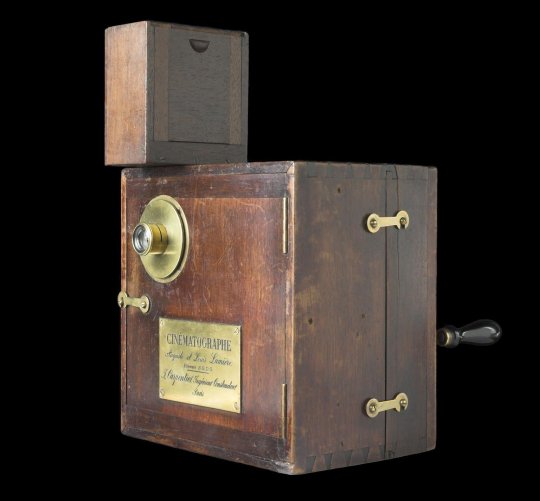

Who invented cinema? in A very short history of cinema
Published: 18 June 2020
Learn about the history and development of cinema, from the Kinetoscope in 1891 to today’s 3D revival.Cinematography is the illusion of movement by the recording and subsequent rapid projection of many still photographic pictures on a screen. Originally a product of 19th-century scientific endeavour, cinema has become a medium of mass entertainment and communication, and today it is a multi-billion-pound industry.
Who invented cinema?
Publicity image of Edison Kinetophone, c.1895
Image source for Publicity photograph of man using Edison Kinetophone, c.1895 No one person invented cinema. However, in 1891 the Edison Company successfully demonstrated a prototype of the Kinetoscope, which enabled one person at a time to view moving pictures.The first public Kinetoscope demonstration took place in 1893. By 1894 the Kinetoscope was a commercial success, with public parlours established around the world.The first to present projected moving pictures to a paying audience were the Lumière brothers in December 1895 in Paris, France. They used a device of their own making, the Cinématographe, which was a camera, a projector and a film printer all in one.
What were early films like?
At first, films were very short, sometimes only a few minutes or less. They were shown at fairgrounds, music halls, or anywhere a screen could be set up and a room darkened. Subjects included local scenes and activities, views of foreign lands, short comedies and newsworthy events.The films were accompanied by lectures, music and a lot of audience participation. Although they did not have synchronised dialogue, they were not ‘silent’ as they are sometimes described.
The rise of the film industry By 1914, several national film industries were established. At this time, Europe, Russia and Scandinavia were the dominant industries; America was much less important. Films became longer and storytelling, or narrative, became the dominant form.As more people paid to see movies, the industry which grew around them was prepared to invest more money in their production, distribution and exhibition, so large studios were established and dedicated cinemas built. The First World War greatly affected the film industry in Europe, and the American industry grew in relative importance.The first 30 years of cinema were characterised by the growth and consolidation of an industrial base, the establishment of the narrative form, and refinement of technology.
Adding colour Colour was first added to black-and-white movies through hand colouring, tinting, toning and stencilling.By 1906, the principles of colour separation were used to produce so-called ‘natural colour’ moving images with the British Kinemacolor process, first presented to the public in 1909.Kinemacolor was primarily used for documentary (or ‘actuality’) films, such as the epic With Our King and Queen Through India (also known as The Delhi Durbar) of 1912, which ran for over 2 hours in total.The early Technicolor processes from 1915 onwards were cumbersome and expensive, and colour was not used more widely until the introduction of its three‑colour process in 1932. It was used for films such as Gone With the Wind and The Wizard of Oz (both 1939) in Hollywood and A Matter of Life and Death (1946) in the UK.
Adding sound Science Museum Group Collection Vitaphone disc, 1930. Science Museum Group Collection Image source for Vitaphone disc The first attempts to add synchronised sound to projected pictures used phonographic cylinders or discs.The first feature-length movie incorporating synchronised dialogue, The Jazz Singer (USA, 1927), used the Warner Brothers’ Vitaphone system, which employed a separate record disc with each reel of film for the sound.This system proved unreliable and was soon replaced by an optical, variable density soundtrack recorded photographically along the edge of the film, developed originally for newsreels such as Movietone.
Cinema’s Golden Age Cinema audience, 1932, James Jarché. Science Museum Group Collection Image source By the early 1930s, nearly all feature-length movies were presented with synchronised sound and, by the mid-1930s, some were in full colour too. The advent of sound secured the dominant role of the American industry and gave rise to the so-called ‘Golden Age of Hollywood’.During the 1930s and 1940s, cinema was the principal form of popular entertainment, with people often attending cinemas twice a week. Ornate ’super’ cinemas or ‘picture palaces’, offering extra facilities such as cafés and ballrooms, came to towns and cities; many of them could hold over 3,000 people in a single auditorium.In Britain, the highest attendances occurred in 1946, with over 31 million visits to the cinema each week. 📷 Science Museum Group Collection
What is the aspect ratio?
Thomas Edison had used perforated 35mm film in the Kinetoscope, and in 1909 this was adopted as the worldwide industry standard. The picture had a width-to-height relationship—known as the aspect ratio—of 4:3 or 1.33:1. The first number refers to the width of the screen, and the second to the height. So for example, for every 4 centimetres in width, there will be 3 in height.With the advent of optical sound, the aspect ratio was adjusted to 1.37:1. This is known as the ‘Academy ratio’, as it was officially approved by the Academy of Motion Picture Arts and Sciences (the Oscars people) in 1932.Although there were many experiments with other formats, there were no major changes in screen ratios until the 1950s.
d https://www.scienceandmediamuseum.org.uk/objects-and-stories/very-short-history-of-cinema
1 note
·
View note
Text
Qatar World Cup: Tabarez couldn't ignore Uruguay's promise in Football World Cup 2022
In the 20-20 of hindsight, it would have stood better had Oscar Washington Tabarez walked down as coach of Uruguay after the last FIFA World Cup. Instead, he soldiered on, and at the age of 74 his epic, near-16-year control has come to an end at a period, not of his selecting, shown the door later four successive defeats, three of them heavy, in the Football World Cup 2022 qualifiers.
Fans from all over the world are called to book FIFA World Cup Tickets from our online platforms WorldWideTicketsandHospitality.com. Football World Cup fans can book Uruguay Football World Cup Tickets on our website at exclusively discounted prices.

Had he been absent three years ago then barely a bad word could have been said beside him. He ongoing his second spell in the custody of the national squad in 2006, taking control of a lateral that had missed out on three of the previous four Football World Cups and was unsuccessful to make it out of the collection phase in the other. Uruguay's glory days, it was decided, were well and truthfully in the past.
How could it be then with a population little additional than 3 million? The first kings of the global game were fated to the eternal status of also-rans. And yet, in the three following FIFA World Cups, Uruguay has continuously qualified, always made the second round and in two of them were statistically the greatest side from South America. Last time out they removed Portugal, the governing European champions, in the quarterfinals.
Even so, Tabarez was port with what-ifs. In 2010, for example, what if Luis Suarez had not remained sent off in the quarterfinal beside Ghana? True, he was shamefaced of the most obvious handball, but the free-kick to Ghana that initiated the event was an absurd award in the failing seconds. Then in 2014, what if Suarez had not chosen up an interruption for his bizarre choice to bite Giorgio Chiellini? For more to know about FIFA World Cup Packages Click here
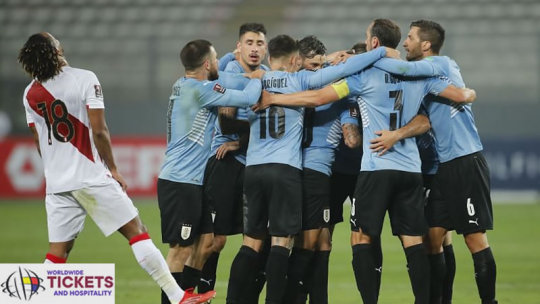
After opening-day overthrow to Costa Rica, Uruguay had saved themselves with a win over England and Italy their first FIFA World Cup victories over European opposition since 1970 only to lose all impetus when they lost their star striker. And what if Edison Cavani had not hurt a wound in 2018 and wasted the quarterfinal against France? With such a small population, Uruguay is inevitably needy on a small group of star players, and it prices them to be without one of the most significant on a large day.
Tabarez has completed his bit to enlarge the talent pool. Probably the most imposing part of his long reign has been the care paid to the youth ranks, identifying youngsters with the speed of thought, effort, and method to thrive in the global game, building an association with the national squad, and using the under-20 side as a conveyor belt to the senior side.
And this is what seduced Tabarez into remaining on after Russia 2018. He is coherent that in Qatar he would still be able to total on Suarez and Cavani, plus certain of his old dependables. And his gifted youngsters particularly the likes of Federico Val Verde and Rodrigo Bentancur would have inwards at full maturity.

So why has it not worked? In part, this has to do with the fitting list. The last four games lost by a shared score of 11-1 have been away to Argentina, away to Brazil, at home to Argentina (an unsuccessful defeat), and the feared trip to extreme height to take on Bolivia.
We are offering tickets for FIFA World Cup admirers can get World Cup Tickets through our trusted online ticketing marketplace. Worldwideticketsandhospitality.com is the most reliable source to book Qatar FIFA World Cup Hospitality Packages and Football World Cup Packages & Sign Up for the latest Tickets alerts.
#UruguayFootballWorldCupTickets#FIFAWorldCupTickets#QatarWorldCup2022Tickets#FootballWorldCupTickets#FIFAWorldCupPackages#QatarWorldCupTickets#WorldCupTickets
0 notes
Link
100 years ago yesterday — on July 29, 1921 — Adolph Hitler was elected leader of the Nationalist Socialist German Workers’ Party, later known as the Nazi Party. The combustible Army corporal succeeded the party’s original leader, Anton Drexler, whom Hitler originally been sent to spy on, but whose ideas he came to admire (he may even have shaved his mustache to emulate his predecessor). The 533-1 delegate vote set in motion a series of events that would dominate the next two and a half decades of world history.
A young Jewish Internet commentator named Manny Marotta wanted to call attention to the date, for educational purposes. Marotta has been maintaining popular accounts on both Twitter and Instagram called 100 Years Ago Live. His simple, clever, and enlightening mission is to describe history as an actual contemporary might have, in the language of modern social media tools. It’s popular, earning 26,000 followers on Twitter.
Marotta’s accounts remind us that the past was once news, that stories we now remember as ossified, fixed narratives captured in black and white were once fresh, suspenseful events, that filled contemporaries with excitement, and uncertainty.
Whether it’s a snapshot of a socialist congress in Lille, France that at the time might have seemed the beginning of a global Western revolution, or a cartoon showing both sides of the prohibition debate that showed how extremes of opinion dominated discourse even back then, Marotta has a nice touch for putting readers in the mood of the era, while keeping our thoughts in the present. He is very much the opposite of a Nazi or a fascist, and posts about history in the hope that people will learn from it. “I have a step-grandmother who’s a Holocaust survivor,” he says. “That’s part of the reason I started the account.”
…
There is no politicking or advocacy observable here, not as standalone posts and still less in the context of hundreds of other entries about other scenes as disparate as Thomas Edison taking a nap under a tree, a woman on Tremont Street in Boston turning heads by wearing pants, or a Soviet ship shelled in the Russian Civil War.
Nonetheless, Instagram pulled Marotta’s post on Hitler’s election, saying it violated “community guidelines.” When he appealed the decision, the rejected him again, saying his content went against their guidelines on “violence or dangerous organizations”
…
Since the beginning of the “content moderation” movement, a major problem has become apparent. Human beings simply create too much content on Twitter, Facebook, YouTube, and Instagram for other human beings to review. Machines have proven able to identify clearly inappropriate content like child pornography (though even there the algorithms occasionally stumbled, as in the case of Facebook’s removal of the famous “Running Girl” photo).
But asking computer programs to sort out the subtleties of different types of speech — differences between commentary and advocacy, criticism and incitement, reporting and participation — has proven a disaster. A theme running through nearly all of the “Meet the Censored” articles is this problem of algorithmic censorship systematically throwing out babies with bathwater.
Whether it’s YouTube cracking down on videographer Ford Fischer for covering events involving Holocaust deniers or white supremacists, the same platform zapping footage of the January 6th riots shot by Jon Farina of Status Coup, or Matt Orfalea being punished for violating a “criminal organizations policy” for a spoof coffee commercial involving a mass-murderer, Internet carriers have consistently shown they cannot or will not distinguish between, say, being a Nazi and criticizing one, joking about one, even warning about one.
The frightening thing about the 100YearsAgoLive incident is that it’s not hard to see this becoming a trend, where history itself is deemed to violate common decency. The whole idea of historical education is to prevent future horrors via graphic warnings from the past. Survivors of the Holocaust have always been adamant that we must “Never Forget,” that places such as Auschwitz must never be buried or hidden away but instead displayed prominently, made into lasting cultural artifacts whose purpose is to be so conspicuous as to prevent the natural human impulse to whitewash our sadly expansive history of evil.
In the name of combating hate speech, violence, conspiracy theory, etc., Internet platforms are removing not just advocacy, but knowledge, in a wide-ranging effort that may help the companies create a more frictionless, commercially successful product, but will impede the past from chastening the present. If the aim is preventing the spread of hateful ideas, nothing could be more counter-productive that cleaning away the record of their real-world impact.
This 100YearsAgoLive episode seems like a silly glitch at first, a parody of Internet censorship, but it’s no joke — if we’re going to put machines in charge of cleaning our mental universes, the past is going to be one of the first casualties.
0 notes